The other day I noticed a solar-powered lighting system beside a main road, connected to a set of school-zone warning lights *. Once I began looking, I noted several solar-powered devices around the streets. Here are just a few of my favourites.
![]() * As in many parts of the world, one of the road rules here (Sydney, Australia) requires a reduced speed around schools during the times the children arrive and leave each day. A set of lights and warning signs often announces this.
* As in many parts of the world, one of the road rules here (Sydney, Australia) requires a reduced speed around schools during the times the children arrive and leave each day. A set of lights and warning signs often announces this.
What are the main advantages of solar-powered devices?
 Before we begin, let’s take a quick look at two of the key advantages of solar-powered devices in general. These apply to almost anything that’s solar-powered – whether it’s intended for domestic or commercial use.
Before we begin, let’s take a quick look at two of the key advantages of solar-powered devices in general. These apply to almost anything that’s solar-powered – whether it’s intended for domestic or commercial use.
- Installation is often simpler. Once you remove the cables supplying power to the device itself (and I’m obviously referring to larger equipment here), the installation requirements are greatly simplified in many cases. It’s also less to worry about when you’re digging nearby.
- Greatly reduced maintenance costs. A significant part of the maintenance cost for many electrical devices involves the power supply, and the transmission of this power to the core of the equipment. Solar-powered devices remove this.
Once the initial cost comes down to a reasonable level, local government bodies stand to save a considerable amount of money; both when the items are new, and on an ongoing basis.
Solar-powered devices in the streets
Now, on to the devices themselves. These are all things which are currently available, and in use in various parts of the world. If you’d like to see more of them where you live, just talk to your local council or government.
Street lights
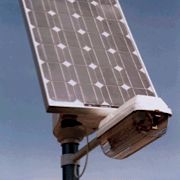 These really show off the two advantages above. With nothing physically connecting them to each other (wireless communications sort out the timing and collective functions), they take up a very small space at ground level. Meanwhile, the reduced maintenance cost enables them to be employed along minor roads in small towns which otherwise go poorly lit.
These really show off the two advantages above. With nothing physically connecting them to each other (wireless communications sort out the timing and collective functions), they take up a very small space at ground level. Meanwhile, the reduced maintenance cost enables them to be employed along minor roads in small towns which otherwise go poorly lit.
Although there are many varieties, the one in the photo at left shows a typical setup. The overall shape of each streetlight is almost unchanged.
NB : Portable versions of these are also available – perfect for temporary uses, such as roadworks.
Parking meters
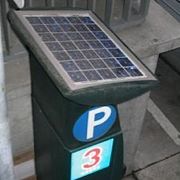 These are the first solar-powered devices I saw beside the roads, several years ago. As solar options become cheaper and more efficient, the solar-powered parking meters are making their presence felt in a number of parts of the world.
These are the first solar-powered devices I saw beside the roads, several years ago. As solar options become cheaper and more efficient, the solar-powered parking meters are making their presence felt in a number of parts of the world.
School safety lights
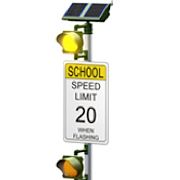 These are the lights I mentioned at the beginning of this article. The device itself is a simple warning sign – a series of flashing lights and an area of text – and is ideal for the solar approach.
These are the lights I mentioned at the beginning of this article. The device itself is a simple warning sign – a series of flashing lights and an area of text – and is ideal for the solar approach.
NB : a great alternative is the SafeZone, which features a series of coloured road-based markers. Very easy to see.
Bus shelters
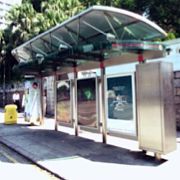 This seems like an obvious use for solar technology, as it’s fairly simple to modify existing shelters; without any significant change to their appearance. These are gradually becoming more common in many areas.
This seems like an obvious use for solar technology, as it’s fairly simple to modify existing shelters; without any significant change to their appearance. These are gradually becoming more common in many areas.
Buses
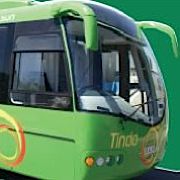 The Tindo Solar Bus I pointed to recently operates on a very simple model. The solar power is gathered at the bus depot, not on the vehicle itself; and simply recharges the vehicle at night (in the same way as a plug-in hybrid). Being an electric vehicle, the bus is almost silent, and perfect for the typical short journeys around urban areas.
The Tindo Solar Bus I pointed to recently operates on a very simple model. The solar power is gathered at the bus depot, not on the vehicle itself; and simply recharges the vehicle at night (in the same way as a plug-in hybrid). Being an electric vehicle, the bus is almost silent, and perfect for the typical short journeys around urban areas.
Solar Road Markers
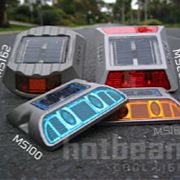 As you can see from the photo, these are essentially solar-powered cats-eyes. As you’d expect for devices which are going to suffer being run over many times a day, they’re extremely tough. Temperature extremes, heavy traffic – no problem at all. Great things.
As you can see from the photo, these are essentially solar-powered cats-eyes. As you’d expect for devices which are going to suffer being run over many times a day, they’re extremely tough. Temperature extremes, heavy traffic – no problem at all. Great things.
Temporary Traffic lights
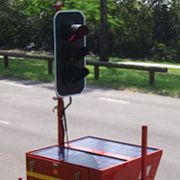 This is a superb combination of power from renewable and non-renewable sources – solar-powered temporary traffic lights. As with the street lights, these often make use of wireless communications to keep everything running smoothly.
This is a superb combination of power from renewable and non-renewable sources – solar-powered temporary traffic lights. As with the street lights, these often make use of wireless communications to keep everything running smoothly.
Street signs
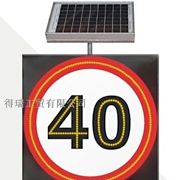 Many of the above devices have a common trait – the energy is harnessed, stored and then re-used when appropriate. Street signs are a perfect example of this. Solar energy is collected during the day, and used to power lighting (for the sign) at night.
Many of the above devices have a common trait – the energy is harnessed, stored and then re-used when appropriate. Street signs are a perfect example of this. Solar energy is collected during the day, and used to power lighting (for the sign) at night.
A battery backup easily covers the dim and overcast days.
And a few that I’d like to see :
Permanent Traffic lights
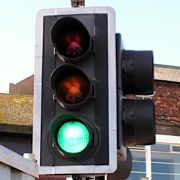 Now that solar-powered temporary traffic lights are available, it isn’t exactly a huge leap to incorporate the same technology in permanent setups. After all, an intersection which is suddenly without traffic lights is chaotic at best.
Now that solar-powered temporary traffic lights are available, it isn’t exactly a huge leap to incorporate the same technology in permanent setups. After all, an intersection which is suddenly without traffic lights is chaotic at best.
Safety railings
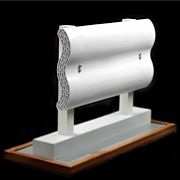 Although several varieties of solar-powered bollards are already available, I haven’t yet come across similar options when it comes to sections of safety railing.
Although several varieties of solar-powered bollards are already available, I haven’t yet come across similar options when it comes to sections of safety railing.
Public Recharge points
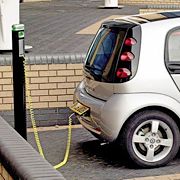 Similar to the solar-powered bollards mentioned above – although they’d simply store their energy, rather than offer lighting – would be public recharge points. If your electric car or hybrid is running low on power, simply pull over and plug in for a while.
Similar to the solar-powered bollards mentioned above – although they’d simply store their energy, rather than offer lighting – would be public recharge points. If your electric car or hybrid is running low on power, simply pull over and plug in for a while.
The cost of maintaining something like this? Very low indeed.
Final thought on Solar Technology in the Streets
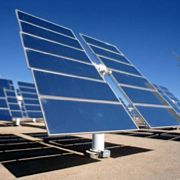 I love the idea of solar power; after all, it’s essentially free electricity. The next time you’re in town, take a look around at the ways in which solar-powered devices could really reduce costs and simplify things.
I love the idea of solar power; after all, it’s essentially free electricity. The next time you’re in town, take a look around at the ways in which solar-powered devices could really reduce costs and simplify things.
Chances are, there are more than you think.
Comments are closed.